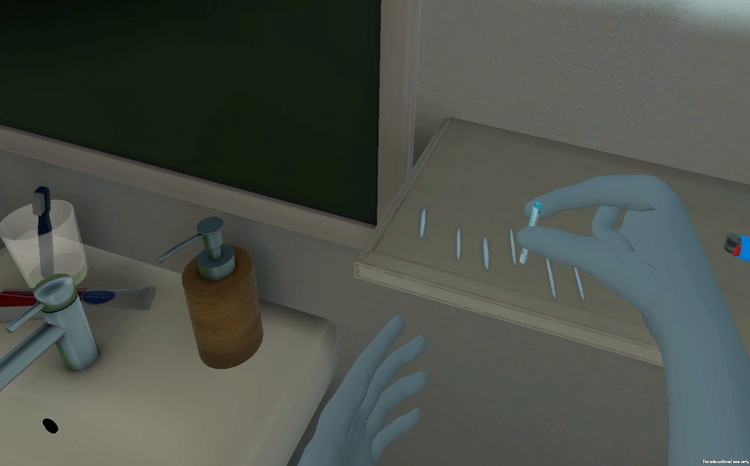Normal for Norfolk
- 20 May 2010
Best use of telehealth and telecare

NHS Norfolk, Norfolk County Council, Telemedcare and Barchester Healthcare Group

NHS Norfolk, Norfolk County Council, Telemedcare and Barchester Healthcare Group are working together in a telehealth partnership to support patients with long term conditions and reduce admissions to hospital.
They are running a scheme that uses telecare and high-tech equipment to support people with chronic conditions in the privacy of their own homes or in care facilities such as GP surgeries and nursing homes.
Telehealth and telecare has been attracting interest for a number of years, and has been used in Norfolk for the past six years. “The council here saw the benefits of assistive technology quite early on,” says Jon Langman, assistive technology service manager at Norfolk County Council.
“We’ve been using it since 2003. Norfolk’s a spread-out county, with a very rural population, and doesn’t have great communications, so we saw that being able to support people in the comfort of their own homes was important. Assistive technology is a really effective way of dealing with a potentially difficult situation.”
Norfolk has also been one of the front -runners in getting assistive technology to work in both health and social care. “Our project in Norfolk has always been one of integration between health and social care,” says Ruth Nobbs, telehealth project lead for NHS Norfolk.
Langman agrees. “The integration between these two services has been quite revolutionary. It’s something that the government is now pushing for – but in Norfolk, with an ageing population and with the increase of long-term health conditions, merging the use of assistive technology between the two services simply made sense.”
Boxes and wires
The equipment used in the project includes alarms and electronic sensors, electronic ‘memory minders’ and carer alerts, as well as a community alarm unit. When it is set off, this alerts a staffed control centre to any possible problems.
So far in Norfolk, more than 25,000 people are supported with community alarms. “We provide a whole range of stand-alone equipment,” says Langman, “but we’re also moving to provide a person-centred approach.
“We pride ourselves on matching skills and equipment to an individual’s needs. For example, if we’re installing a vital signs monitor for someone with chronic obstructive pulmonary disease (COPD), and they are seen to be at risk of falls, then we can look at their individual case and recommend other equipment for their use.”
The telehealth side of the project was tested and rolled out with the assistance of a government grant, the Preventative Technology Grant (PTG). The county held a year-long telehealth project with people who suffered from COPD and heart failure, trialing the use of vital sign monitors whilst living in their own homes.
The success of this led on to a further telehealth trial in a care home setting. Patients and carers used monitoring equipment to answer a series of questionnaires about vital signs, including blood pressure, oxygen levels, weight, pulse and ECG readings.
So that accurate assessments could be made, the equipment was programmed with specific questions for the patient to answer. The information was then fed electronically, via the internet, to clinicians who were able to analyse and keep tabs on the patient’s stability and make decisions about individual treatment plans.
This remote healthcare system allowed patients to record their health data from day to day from the comfort of their own environment, without having to make trips to a clinic or surgery.
“The main advantage of the Telemedcare model is that all data is transferred to one web portal whether from a care home or the patients’ own home,” says Saneth Wijayaratna for Telemedcare, who supplied the vital sign monitors. The clinician can securely access the data via a login and password from any terminal with access to the internet.”
Early warnings
One of the many benefits of the scheme is that it works as an early warning system. “It allows patients to stay where they want to be and self-manage their conditions but it also allows clinical care teams to remotely support people within the community whilst reducing numbers of admissions to hospital and A&E,” says Wijayaratna.
“When we trialed this system in Woodside House (a care home run by Barchester Healthcare Group) we found there was an 80% reduction in hospital admissions.
“One of the issues in a care home is that if someone is unwell, an ambulance is routinely called. By using this technology, the staff are able to monitor residents on a regular basis and only call on the healthcare service when really needed.”
Technically, the systems have been simple to use. “The main difficulty wasn’t with the actual technology, but with the co-ordination,” says Langman. “Telehealth is trend-monitoring over time, rather than a constant monitoring service. As far as training and troubleshooting went it was pretty simple.”
For the future, assistive technology can only improve. ‘We’re moving on now’, says Langman. ‘With assistive technology, the earlier you can get it in, the better. We’re now exploring how we can use assistive technology before someone reaches crisis point – which can only help reduce hospital admissions and take pressure off A&E.”
The E-Health Insider Awards 2010 in association with BT seek out and reward outstanding work within the UK healthcare IT sector. Entries are open now on the dedicated awards website.
The deadline for entries is 4 June.
The awards will be presented on Wednesday, 6 October in the Grand Hall at the Grand Connaught Rooms, Covent Garden, London. For more information or to reserve a table, please visit the awards website.




